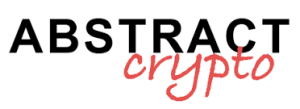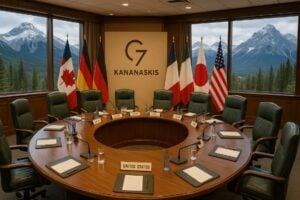Between June 16 and 17, 2025, the leaders of Canada, United States, United Kingdom, France, Germany, Italy, Japan, and European Union met in Kananaskis, in the heart of the Canadian Rocky Mountains, for the 51st G7 summit.
The formal agenda – focused on energy security, “just-in-case” supply chains, artificial intelligence, and climate change – was disrupted by the rapid escalation between Israel and Iran and by the more than 200 mega-fires raging just a few hours’ drive from the resort.
To comprehensively document what has been said, I present:
- the discorso integrale of the Canadian premier Mark Carney opening;
- the Trump-Starmer press conference (USA-UK) almost complete;
- the botta-e-risposta Trump-Carney in front of the media;
- the official text of the G7 declaration on Israel-Iran;
- Analysis and context, so as to offer a single point of reference.
“`html
G7 2025: The opening of Mark Carney
“`
Mark Carney: “Buongiorno a tutti. Benvenuti a Kananaskis e al Vertice dei Leader del G7 del 2025. Sono lieto che tutti i leader siano qui, onorato dalla vostra presenza nella mia provincia natale, Alberta, nel cuore delle Montagne Rocciose Canadesi. Vorrei sottolineare che ci stiamo incontrando anche sul territorio del Trattato 7. Queste sono le terre tradizionali della Confederazione Blackfoot, delle Nazioni Stoney Nakoda e delle Prime Nazioni TsuuT’ina.
We’re gathering at one of those turning points in history… 50 years ago a group of leading industrial nations met in Rambouillet in the face of global economic crisis, stagflation and Middle-East turmoil, and the frank discussions around that table ushered in prosperity.
Twenty-three years ago, the G7 met here in Kananaskis while the world reeled from the aftershocks of 9/11, confronting the spread of weapons of mass destruction.
The world is now more divided and dangerous. Hostile states and terrorists have expanded their reach; global commerce and energy systems are being rewired. Nostalgia isn’t a strategy – we must adapt. There can be no security without economic prosperity, and no prosperity without resilience.
Quella resilienza deriva dalla cooperazione attorno a questo tavolo sulla sicurezza energetica e sui minerali critici, intelligenza artificiale, quantistica, lotta al traffico di esseri umani e repressione transnazionale. Potremmo non essere d’accordo su tutto, ma dove cooperiamo faremo una differenza enorme e porteremo la prossima era di prosperità a coloro che serviamo. Grazie, colleghi. Abbiamo del lavoro da fare.”
“`html
Analysis
“`
Carney frames the summit as a “hinge moment”: security (Iranian drones, Russian cyber-attacks) is inseparable from economic resilience. The reference to “nostalgia” is a jab at those, like Trump, who would like a return to the G8 format with Moscow included.
Israel-Iran Crisis: the extraordinary declaration of June 16
At 10:00 PM local time on June 16, the Seven release the “G7 Leaders’ Statement on Recent Developments Between Israel and Iran”:
«We reaffirm Israel’s right to self-defense and our determination to prevent Iran from acquiring nuclear weapons. We call on all parties for an immediate de-escalation, including a lasting ceasefire in Gaza, and to protect civilians. The G7 also commits to coordinating measures to safeguard the stability of global energy markets.»
The note, ten lines long, prepares the ground for Donald Trump’s early departure, determined to “follow the crisis from the Situation Room.”
Trump + Starmer: the Anglo-American “gaggle”
Donald Trump: “Okay, thank you very much. We all know the great Prime Minister of the UK, and we just signed our trade agreement with the European Union. It’s a fair deal, lots of jobs, lots of income…
Keir Starmer: “A very important document: lowers tariffs on electric cars and aerospace, creates opportunities for whisky and financial services.”
Reporter: “Updates on Israel-Iran?”
Trump: “I’ve spoken to everybody. L’Iran aveva 60 giorni; il giorno 61 hai visto cosa è successo. Un accordo sarà firmato; sarebbero sciocchi a non farlo.”
Reporter: “Do you rule out a USA military involvement?”
Trump: “Iran is basically at the negotiating table; as soon as I leave here we’ll be doing something.”
Reporter: “Steel tariffs: will you eliminate them or will they remain?”
Trump: “You’ll have that information in a little while.”
Reporter: “More sanctions on Russia?”
Trump: “Sanctions cost us billions; it’s not a one-way street.”
Reporter: “AUKUS?”
Starmer: “Proceeding. The President is doing a review; makes good sense.”
Trump (jokes): “He’s slightly more liberal than I am, but for some reason we get along.”
(rain of questions on Ukraine, Iran, UK tariffs)
Trump: “I want to see no nuclear weapon in Iran; we’re well on our way. The UK is very well-protected because I like them. That’s their ultimate protection… Thank you.”
Why it matters
- Announces a USA-UK-EU lightning trade agreement which, if confirmed, would be the first post-Brexit triangular deal.
- Insists on the “60-day doctrine” towards Tehran: ultimatum expired ⇒ legitimacy for punitive action.
- Resize the impact of the sanctions: prelude to a possible “tariff diplomacy” on steel and European automotive.
Trump + Carney in front of the microphones
Mark Carney: “Mr President, welcome to Canada. Happy birthday and happy 250° to your Armed Forces.”
Donald Trump: “Thank you. It’s a great honour.”
Carney: “What do you expect from this summit?”
Trump: “Trade with Canada. I’m a tariff person – semplice, facile, preciso. Mark ha un’idea più complessa; esamineremo entrambi.”
Reporter: “Is an agreement within reach?”
Trump: “Certainly, it’s achievable. Both parties have to agree.”
Reporter: “Signals from Iran of de-escalation?”
Trump: “They’d like to talk, but they should have done that before. Iran is not winning this bull and should talk immediately.”
Reporter: “What conditions for a USA intervention?”
Trump: “I don’t want to talk about that – we’ll see.”
Reporter: “Putin back at the G8 table?”
Trump: “Throwing Russia out was a mistake. If he were still in, you wouldn’t have a war now.”
Reporter: “Why not invite China?”
Trump: “Not a bad idea… but they don’t talk. Putin speaks to me.”
Reporter: “Immigration: why order ICE to focus on the blue cities?”
Trump: “Because that’s where the criminals are… Biden allowed 21 million people in, many from jails abroad.”
Carney (closes): “If you don’t mind, I have to exercise my role as chair; we have a meeting to start. Thank you.”
“`html
Strategic reading
“`
- Tariff vs Canadian model. Trump wields the tariff tool as a “quick fix”; Carney focuses on a multi-chapter agreement with ESG standards and climate clauses.
- Russia, Cina, Iran. The USA president revives the narrative of the “Obama-Trudeau mistake” regarding Moscow’s expulsion and, at the same time, effectively opens up to a G9 with Beijing, marking the bilateral twist in his diplomacy.
- Internal immigration. The attack on “democratic sanctuaries” foreshadows a federal campaign of ICE operations focused on Chicago, LA, and NYC.
Concrete decisions: the six operational plans
Despite the media chaos, the negotiators bring home six thematic documents (June 17):
| # | Title | Main Objectives | Estimated Impact |
| 1 | Critical Minerals Action Plan | Diversify supplies of cobalt, lithium, gallium; complete traceability within 12 months | Reduces G7 dependence on China from 75% to 40% by 2028 |
| 2 | AI for Prosperity Roadmap | Mandatory watermarking and pre-launch audit for foundation models | G7 pre-standard to be brought to the AI Safety Summit in Seoul 2026 |
| 3 | Kananaskis Wildfire Charter | Task force with a common fleet of Canadairs and real-time satellite data | Provides “mutual aid” between Canada, Italy, USA, Japan |
| 4 | Quantum Testbeds Network | Connect G7 research centers with QRNG protocols | Accelerates proof-of-concept on post-quantum encryption |
| 5 | Blueprint against migrant trafficking | Integrated naval patrols + ad hoc tribunal | Pilot Mediterranean-Gulf of Aden 2026 |
| 6 | Statement on transnational repression | Targeted sanctions on surveillance apparatus “overseas police stations” | Collaborates with EU Anti-Coercion Instrument |
Conclusions
The G7 of Kananaskis will be remembered for three parables:
- Geopolitics in live fire. The Israel-Iran war disrupts the agenda and brings the summit back to the functions of a Western “war-cabinet.”
- Tariff diplomacy vs multilateral. Trump uses the summit as a stage for quick deals and proclamations on tariffs and Russia; Carney attempts to relaunch the G7 as a collective steering committee.
- Dual-use technologies. AI, quantum, and critical minerals enter the national security lexicon, with shared minimum standards – a decisive step towards harmonized regulations.
The final compromise – six operational plans plus the declaration on Israel-Iran – shows that, even in the era of nationalisms, the G7 remains a forum of convergence when the stakes are existential.


